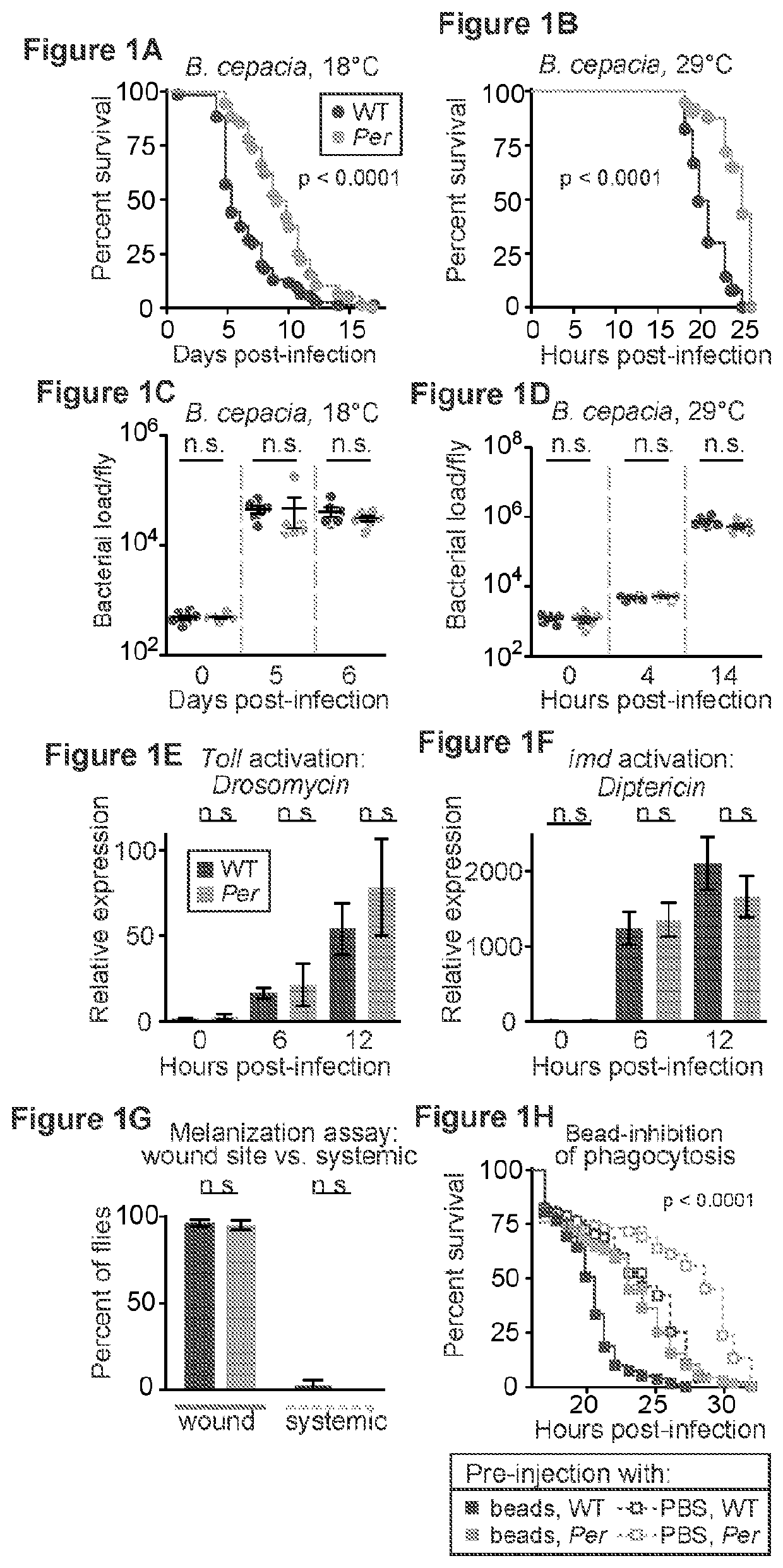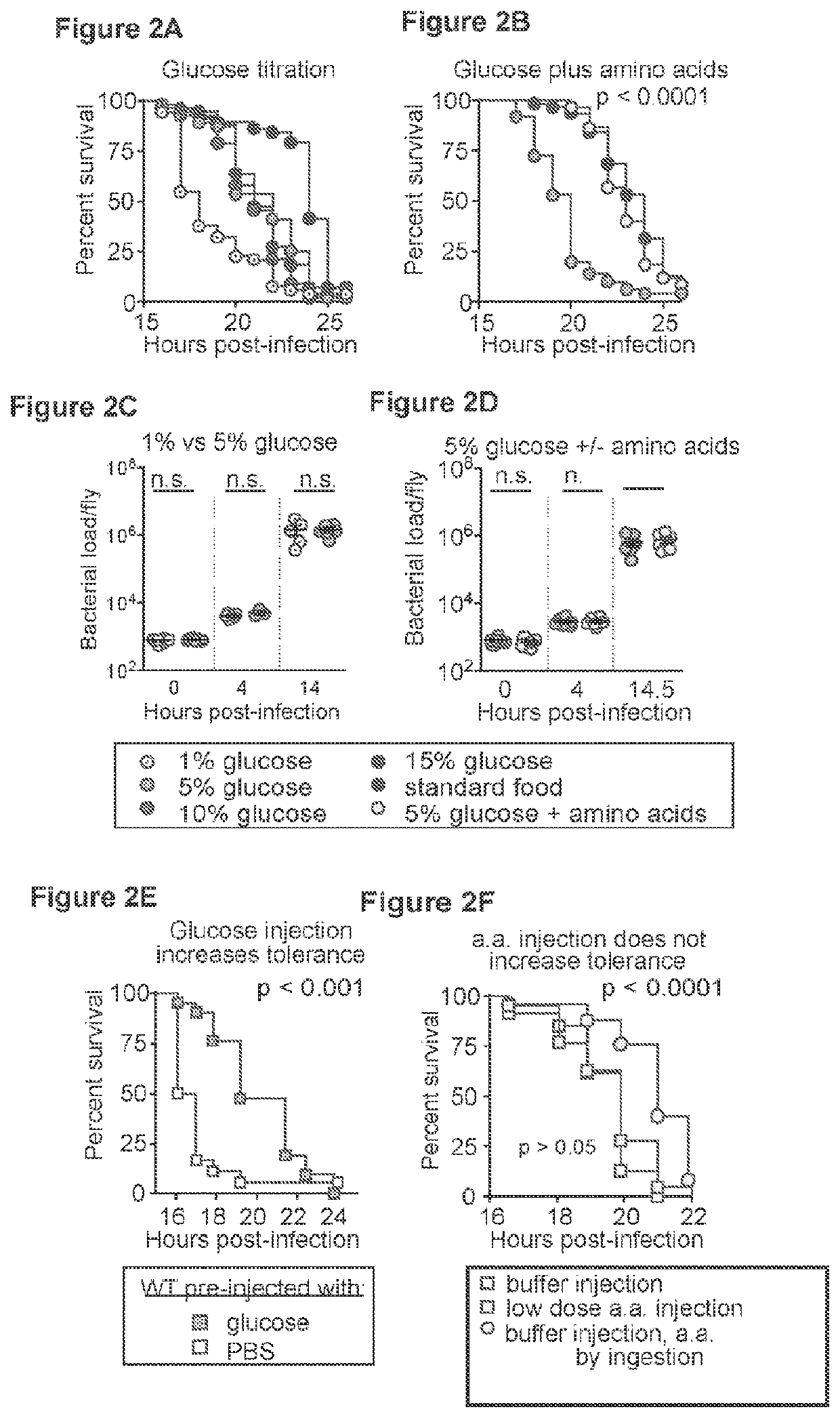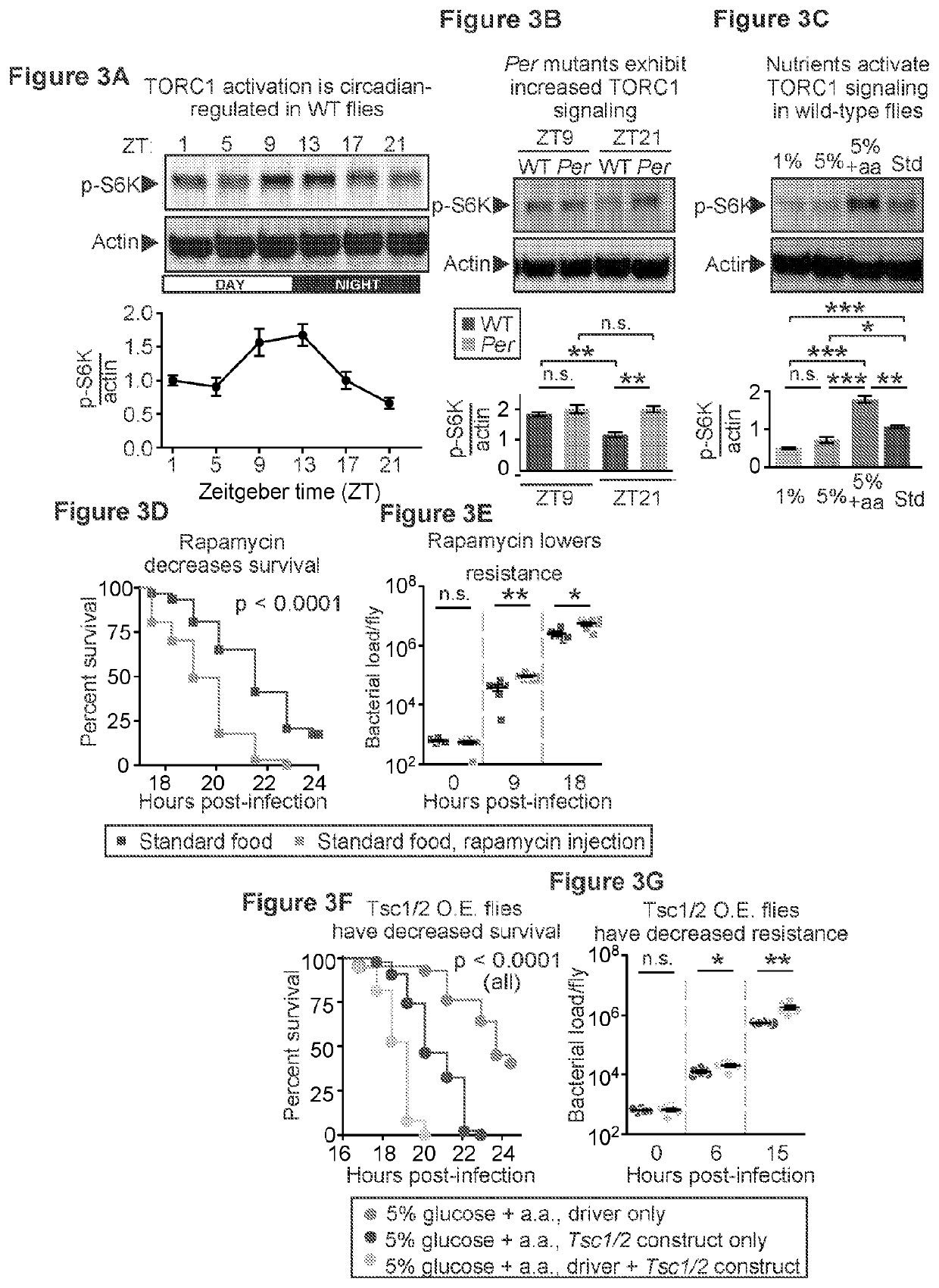Inhibition of TOR complex 2 increases immunity against bacterial infection
a technology of tor complex and immune response, applied in the field of immunity, can solve the problems of high mortality rate, bacterial infection systemic, sepsis or septicemia, and associated infection, and achieve the effects of increasing immunity, increasing tolerance, and increasing survival
- Summary
- Abstract
- Description
- Claims
- Application Information
AI Technical Summary
Benefits of technology
Problems solved by technology
Method used
Image
Examples
example 1
and Methods
Fly Strains
[0099]w1118per01 (null) mutants (Konopka and Benzer 1971) were outcrossed with a w1118 Canton S strain, used as isogenic controls (Krishnan et al. 2008). Wild-type Oregon R flies were used to test effects of dietary components and rapamycin. UAS-Tsc1 / Tsc2 (from Marc Tatar) (Tapon et al. 2001) homozygous males were crossed to w1118; tub>Gal80-ts; tub>Gal4 / TM6c virgins and maintained at 18° C. until 29° C. transgene induction 24 or 48 hours before infection.
[0100]rictor null mutants (imprecise p-element excision alleles rictorΔ1 and rictorΔ2) and precise excision controls were obtained from Stephen Cohen (Dimitroff et al. 2012). Experiments used hemizygous rictorΔ2 flies.
[0101]Sin1e03756 (SAPK-interacting protein 1) mutants are null piggyBac transposon insertion mutants from Bloomington Drosophila Stock Center, stock #18188 (Hietakangas and Cohen 2007). 5-10 day-old males raised on standard molasses food were used for all experiments.
Infections
[0102]Infections we...
example 3
lucose and Amino Acids Enhance Infection Tolerance in Wild Type Flies
[0114]It was shown that the increased survival of the per01 mutants was due to increased feeding and that a restrictive diet of only water, agar, and 1% glucose decreased survival and host tolerance of infection in both the mutants and wild type flies (results not shown).
[0115]To identify specific dietary components contributing to tolerance of infection, a restricted diet was supplemented with defined nutrients. Because per01 mutants display pleiotropic defects in metabolism and other circadian-regulated physiologies, wild type flies were used.
[0116]To determine if increasing dietary glucose complements the restricted diet, which contains 1% glucose, the effects of titrating dietary glucose (1%, 5%, 10%, or 15% glucose, no protein) with standard food (5-10% sugar, plus yeast extract) was compared. Wild type flies exhibited shortest survival time when switched to 1% dietary glucose 24 hours before infection and sur...
example 5
TORC1 Signaling Causes Decreased Resistance
[0123]To directly test the role of TORC1 in survival of infection, TORC1 activity was inhibited in two ways. First, flies were injected with rapamycin, a TORC1-specific inhibitor (9.6 ng per fly, equivalent to the mammalian dose of 16 mg / kg (Lee et al. 2009; Loeweth et al. 2002)). Injection of rapamycin inhibited survival of infection relative to injection of buffer alone (FIG. 3D, p<0.0001).
[0124]Unexpectedly, it was found that rapamycin-injected flies had increased bacterial load, indicating decreased resistance (FIG. 5E, p>0.05, p=0.0049, p=0.0198).
[0125]Second, TORC1 activity was inhibited using a temperature-driven system to over-express Tsc1 and Tsc2, proteins forming a TORC1-inhibitory complex (Huang and Manning 2008). Tsc1 / 2 over-expression was confirmed by qRT-PCR (results not shown). Similar to rapamycin injection, genetic inhibition of TORC1 reduced survival after B. cepacia infection (FIG. 3F, p0.05, p=0.0367, p=0.0022).
[0126]Ta...
PUM
| Property | Measurement | Unit |
|---|---|---|
| temperature | aaaaa | aaaaa |
| temperature | aaaaa | aaaaa |
| time | aaaaa | aaaaa |
Abstract
Description
Claims
Application Information
 Login to View More
Login to View More - R&D
- Intellectual Property
- Life Sciences
- Materials
- Tech Scout
- Unparalleled Data Quality
- Higher Quality Content
- 60% Fewer Hallucinations
Browse by: Latest US Patents, China's latest patents, Technical Efficacy Thesaurus, Application Domain, Technology Topic, Popular Technical Reports.
© 2025 PatSnap. All rights reserved.Legal|Privacy policy|Modern Slavery Act Transparency Statement|Sitemap|About US| Contact US: help@patsnap.com



